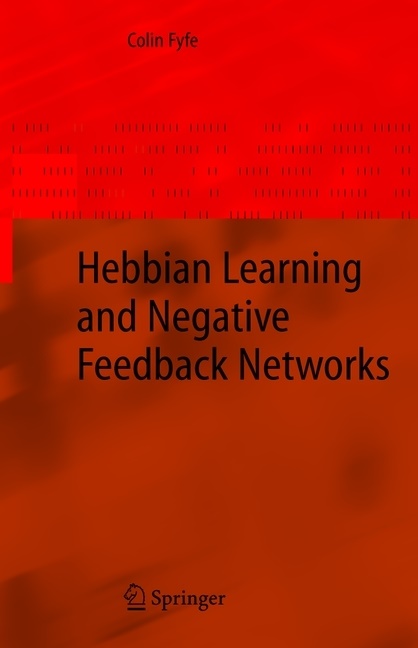Read more
This book is the outcome of a decade's research into a speci?c architecture and associated learning mechanism for an arti?cial neural network: the - chitecture involves negative feedback and the learning mechanism is simple Hebbian learning. The research began with my own thesis at the University of Strathclyde, Scotland, under Professor Douglas McGregor which culminated with me being awarded a PhD in 1995 [52], the title of which was "Negative Feedback as an Organising Principle for Arti?cial Neural Networks". Naturally enough, having established this theme, when I began to sup- vise PhD students of my own, we continued to develop this concept and this book owes much to the research and theses of these students at the Applied Computational Intelligence Research Unit in the University of Paisley. Thus we discuss work from - Dr. Darryl Charles [24] in Chapter 5. - Dr. Stephen McGlinchey [127] in Chapter 7. - Dr. Donald MacDonald [121] in Chapters 6 and 8. - Dr. Emilio Corchado [29] in Chapter 8. We brie?y discuss one simulation from the thesis of Dr. Mark Girolami [58] in Chapter 6 but do not discuss any of the rest of his thesis since it has already appeared in book form [59]. We also must credit Cesar Garcia Osorio, a current PhD student, for the comparative study of the two Exploratory Projection Pursuit networks in Chapter 8. All of Chapters 3 to 8 deal with single stream arti?cial neural networks.
List of contents
Single Stream Networks.- Background.- The Negative Feedback Network.- Peer-Inhibitory Neurons.- Multiple Cause Data.- Exploratory Data Analysis.- Topology Preserving Maps.- Maximum Likelihood Hebbian Learning.- Dual Stream Networks.- Two Neural Networks for Canonical Correlation Analysis.- Alternative Derivations of CCA Networks.- Kernel and Nonlinear Correlations.- Exploratory Correlation Analysis.- Multicollinearity and Partial Least Squares.- Twinned Principal Curves.- The Future.
Summary
This book is the outcome of a decade’s research into a speci?c architecture and associated learning mechanism for an arti?cial neural network: the - chitecture involves negative feedback and the learning mechanism is simple Hebbian learning. The research began with my own thesis at the University of Strathclyde, Scotland, under Professor Douglas McGregor which culminated with me being awarded a PhD in 1995 [52], the title of which was “Negative Feedback as an Organising Principle for Arti?cial Neural Networks”. Naturally enough, having established this theme, when I began to sup- vise PhD students of my own, we continued to develop this concept and this book owes much to the research and theses of these students at the Applied Computational Intelligence Research Unit in the University of Paisley. Thus we discuss work from • Dr. Darryl Charles [24] in Chapter 5. • Dr. Stephen McGlinchey [127] in Chapter 7. • Dr. Donald MacDonald [121] in Chapters 6 and 8. • Dr. Emilio Corchado [29] in Chapter 8. We brie?y discuss one simulation from the thesis of Dr. Mark Girolami [58] in Chapter 6 but do not discuss any of the rest of his thesis since it has already appeared in book form [59]. We also must credit Cesar Garcia Osorio, a current PhD student, for the comparative study of the two Exploratory Projection Pursuit networks in Chapter 8. All of Chapters 3 to 8 deal with single stream arti?cial neural networks.
Additional text
From the reviews of the first edition:
"This book is concerned with developing unsupervised learning procedures and building self organizing network modules that can capture regularities of the environment. … the book provides a detailed introduction to Hebbian learning and negative feedback neural networks and is suitable for self-study or instruction in an introductory course." (Nicolae S. Mera, Zentralblatt MATH, Vol. 1069, 2005)
Report
From the reviews of the first edition:
"This book is concerned with developing unsupervised learning procedures and building self organizing network modules that can capture regularities of the environment. ... the book provides a detailed introduction to Hebbian learning and negative feedback neural networks and is suitable for self-study or instruction in an introductory course." (Nicolae S. Mera, Zentralblatt MATH, Vol. 1069, 2005)

